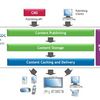By Oliver Krahn, Guest Contributor, Customer Experience Transformation Lead, Alcatel-Lucent
Customer experience management (CEM) focuses on the relationship between service providers and their subscribers, and has become a critical priority in the industry. However, the management solution chosen by service providers to meet the needs of their diverse customer bases can differ widely.
There are two ways of looking at the options:
- Considering the subscribers as a collective group and evaluating a statistical average of experience.
- Accepting and appreciating each individual as (s)he uses the services provided.
The place to start is with “touch points” —specific interfaces where interactions between subscribers and service providers can be measured and analyzed. At these touch points, performance depends on a combination of immediate experiences at the time of interaction and a memory effect around repeated experiences. There are many touch points along the customer journey. They are linked to different phases of the journey as the user interacts with various capabilities of the service provider. There might be retail shopping experiences as people wait to talk with a representative. Or while consuming the service, the touch points become interactions on the devices using the service defined by network capabilities and quantified in areas such as download speed, availability and coverage or the accuracy and payment method of service bills. A broad variety of interactions are handled through contact centers and the ability of agents to access the right information at the right time can play a major role in the experience of the user.
The challenge then becomes managing for touch point performance improvement. This will entail the definition of target performance levels and the indicators required might differ by perspective.
In evaluating organizational performance, for instance, key performance indicators (KPIs) are typically formulated as performance windows allowing for a statistical distribution. However, this does not address the opportunity to manage individual experiences of every single subscriber to increase loyalty and satisfaction at any time, even facing and mitigating performance shortfall.
Beyond the analysis and management of individual touch points, an overall experience view must take into account a mix of experiences across different touch points along the customer journey. The reason is that a specific subscriber might value a certain touch point very highly, yet the service provider might rate it at a lower “experience level”, due to the need to balance effort across all touch points or allow for expectations of different subscriber segments and other operational issues.
What should service providers do?
Alcatel-Lucent has worked with service providers on the challenges caused by the complexities of managing the customer experience for optimal performance from the individual subscriber and service provider perspectives. All the dependencies can be covered in a customer experience hierarchy of KPIs defined across the entire organization. This way consistent experience can be driven and controlled, still leaving dedicated responsibilities in different parts of the organization.
Here are suggested steps in the process:
- Get the basics right. Defining and managing statistical KPIs for each function as part of a QMS is the foundation of a great experience. And the standard ways of working need to be adopted to meet these SLAs consistently.
- Create a weighted list of touch points. This will help decide on priorities driving optimization across systems and processes to ensure the overall impression in the market is right. This effort could be taken on by a cross functional CEM entity that drives and controls improvement plans between different process participants.
- Recognize, evaluate and transform individual performance failures. This allows for the ability to deliver on the promises towards a single subscriber as a positive experience. There will be specific procedures in customer care that might extend into special investigations or benefits dependent on the involvement and value of the subscriber.
It should also be noted that customer experience is impacted by any change to the systems and platforms used by the service provider to deliver the service, or obviously any changes in the way the interactions between subscriber and service provider staff are being performed.
With service provider marketing efforts intensely focused on creating differentiated value, brand awareness and loyalty based on the quality of customer experiences, knowing what is the most cost effective combination of statistical evaluations across device and network intelligence and individual treatment at the customer management level is key to achieving the best customer experience.
Explore specific guidelines and tactics in the “Customer Experience Transformation via Analytics” with the paper in the Customer Experience Transformation Resource Library.











